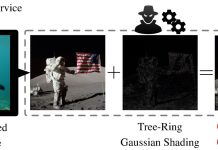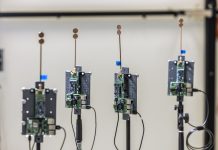
Imagine a clock that is so accurate it won’t lose or gain a second in billions of years, or a tool that can measure light so perfectly it could revolutionize computers and communication.
Scientists are getting closer to making these incredible gadgets a reality.
And they’re doing it by shining a brighter light on tiny computer chips.
First off, let’s talk about something called an “optical frequency comb.”
Think of it like a ruler, but for light. Just as rulers have multiple marks to measure length, these combs have many “teeth,” which are like the marks on a ruler but for measuring light frequencies.
These teeth can be very precise and are useful in gadgets that require exact timing, like super-accurate clocks.
Usually, these combs are made using big, power-hungry lasers found in fancy labs. But Grégory Moille, a researcher from the Joint Quantum Institute, and his team are working on putting them on tiny computer chips.
Putting them on chips is cool because it uses a lot less energy, but there’s a problem. The teeth on these mini combs aren’t very strong, making them less useful for certain tasks, like working with atomic clocks that are extremely accurate.
Here’s where the breakthrough comes in: the researchers figured out a way to make these mini-combs on chips much stronger.
They did this by shining another weaker laser into the system. This allowed them to tune the mini-combs and increase their power a lot, making them more than 15 times stronger in some cases.
Why is this so exciting?
First of all, stronger mini-combs on chips can be used in real-world applications, like those super-accurate clocks. Imagine having that level of precision available not just in high-end labs but in everyday devices.
Also, these combs send out little pulses of light that can be used to measure very high-frequency light waves.
This technology could connect computers and communication systems in new ways. These connections would be super-fast because the light waves used here can oscillate (or “wiggle”) 10,000 times faster than the electronic waves we use today.
The scientists used something called “Kerr solitons” to make this all happen. These are little packets of light that are balanced in a specific way to make this technology work. By syncing these Kerr solitons with another laser, the researchers managed to make the combs way more powerful.
They’ve already proven their idea works both in theory and in actual experiments. However, they believe they can make these mini-combs even more powerful, opening doors for even cooler and more useful gadgets in the future.
So, the next time you’re running late and wish for a more accurate clock or you’re frustrated with slow internet speeds, just remember that brighter lasers on tiny chips might soon be the heroes that save the day.
Follow us on Twitter for more articles about this topic.
Source: Optica.



